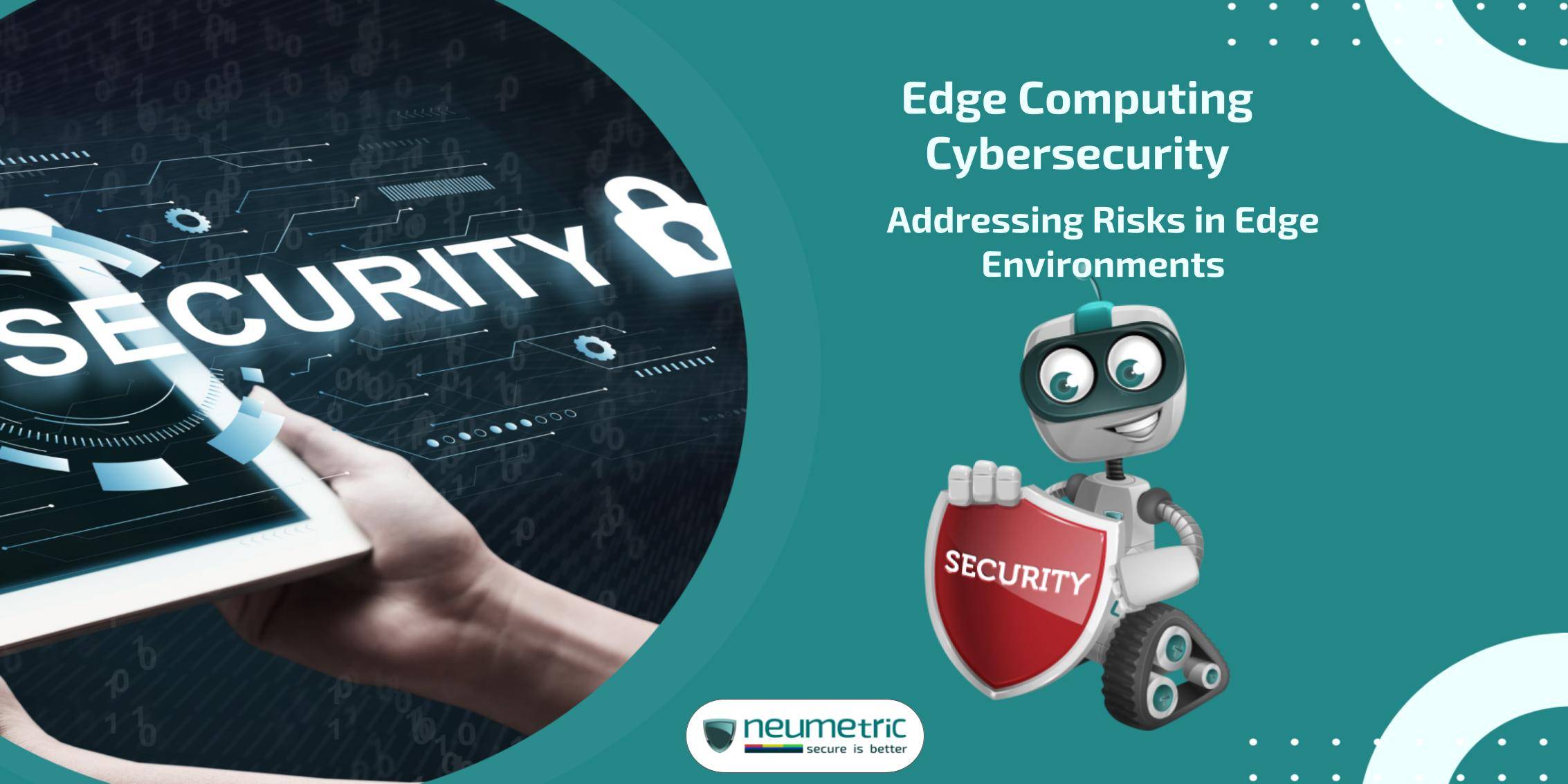Table of Contents
ToggleIntroduction
In the fast-paced realm of modern technology, the term “Edge Computing” has become more than just a buzzword; it’s a transformative force shaping the digital landscape. At its core, edge computing refers to the paradigm of processing data closer to the source of generation rather than relying on centralised cloud servers. This shift has gained significant traction, driven by the insatiable demand for real-time processing & the proliferation of Internet of Things [IoT] devices.
As we navigate through this digital revolution, the growing importance of edge computing becomes evident. Traditional cloud-centric models are encountering limitations, especially in scenarios where low latency & rapid decision-making are paramount. Edge computing, with its promise of localised data processing & reduced latency, has emerged as a solution to these challenges, revolutionising the way we approach data management.
However, this innovation comes with its own set of concerns. The need for robust cybersecurity measures in edge environments is more pressing than ever. As organisations embrace the benefits of edge computing, they must also grapple with the inherent risks associated with decentralised data processing. In this Journal, we will delve into the multifaceted world of Edge Computing Cybersecurity, exploring the nuances, challenges & imperative strategies to safeguard our digital future.
Understanding Edge Computing
Edge computing represents a departure from the conventional cloud-centric data processing model. Instead of funnelling all data to centralised servers, edge computing brings the processing power closer to the source of data generation. Imagine a network where computation happens at the edge of the network, near the devices producing data, rather than relying solely on distant data centres. This paradigm shift not only enhances efficiency but also addresses the evolving needs of our data-driven world.
Key Characteristics of Edge Environments
- Decentralisation: At the heart of edge computing is the concept of decentralisation. Unlike traditional cloud setups, where data is sent to a centralised server for processing, edge environments distribute computing power across a network of devices. This decentralised approach not only reduces the burden on central servers but also minimises latency, ensuring that data-intensive applications operate swiftly & seamlessly.
- Proximity to Data Sources: One of the defining features of edge environments is their proximity to data sources. By processing data closer to where it’s generated, edge computing significantly reduces the time it takes for information to travel back & forth. This proximity is especially crucial in scenarios where real-time insights are imperative, such as in autonomous vehicles, industrial IoT or augmented reality applications.
- Low Latency Requirements: Low latency or the minimal delay in data transmission, is a critical aspect of edge computing. With applications ranging from smart homes to healthcare devices relying on instantaneous responses, low latency is non-negotiable. Edge environments, by virtue of processing data locally, meet these low latency requirements, ensuring that actions are executed promptly, contributing to a seamless & responsive user experience.
Understanding these key characteristics sets the stage for comprehending the unique challenges & opportunities that come with securing data in the decentralised & dynamic world of edge computing.
The rise of Edge Computing & its Security Challenges
The rise of edge computing is nothing short of a technological revolution, with organisations across industries embracing its potential. From manufacturing plants & healthcare facilities to smart cities & autonomous vehicles, the adoption of edge computing is reshaping the way we interact with & process data.
As the number of connected devices continues to soar, the demand for real-time data processing & analysis has propelled the surge in edge computing adoption. Businesses are increasingly recognising the benefits of decentralisation, low latency & enhanced efficiency that edge environments offer. This widespread adoption, however, brings along a host of security challenges that demand our attention.
Unique Cybersecurity Challenges in Edge Environments
- Limited Resources: Edge devices, by their nature, often operate with constrained resources. Unlike robust data centres, these devices may have limited processing power, memory & storage capacity. Securing these devices becomes a delicate balancing act, as traditional cybersecurity measures designed for resource-rich environments may not be directly applicable. Implementing effective security protocols while respecting resource constraints is a challenge that organisations must navigate.
- Diverse Ecosystems: Edge environments encompass a diverse array of devices & technologies. From sensors & actuators to drones & smart appliances, the ecosystem is incredibly heterogeneous. Each device may have its own operating system, communication protocols & security features. Managing the security of such a varied & dynamic landscape requires a nuanced approach, one that acknowledges & addresses the diversity inherent in edge computing ecosystems.
- Lack of Standardisation: Unlike centralised cloud environments, where standardised security protocols are easier to implement, edge computing lacks a universal set of standards. The absence of a standardised framework poses a significant challenge for cybersecurity efforts. Organisations may find it challenging to establish consistent security measures across the varied landscape of edge devices. This lack of standardisation calls for innovative solutions that can adapt to the unique characteristics of each edge environment.
Navigating through these challenges is crucial for the sustained growth & security of edge computing. In the following sections, we’ll explore specific risks associated with these challenges & discuss strategies to fortify the cybersecurity posture of edge environments.
Common Risks in Edge Environments
- Proximity to End Users: The very advantage of edge computing – its proximity to end users – can be a double-edged sword when it comes to data privacy. With processing happening closer to where data is generated, there’s a potential for sensitive information to be exposed to a local network. Addressing this risk requires a meticulous approach to encryption & access controls, ensuring that only authorised entities can access & process sensitive data.
- Localised Data Storage: Edge environments often involve localised storage of data, introducing a risk of unauthorised access or physical breaches. Protecting data stored on edge devices is paramount. Robust encryption methods, regular security audits & secure data disposal practices are essential to mitigate the risks associated with localised data storage.
Increased Attack Surface
- Multiple Entry Points: The decentralised nature of edge environments results in multiple entry points for potential cyber threats. Unlike centralised architectures where security can be concentrated around a few access points, edge computing’s distributed model requires a comprehensive approach. This includes securing each edge device, communication channel & entry point to prevent unauthorised access or data manipulation.
- Vulnerabilities in IoT Devices: Edge environments heavily rely on Internet of Things [IoT] devices, each representing a potential vulnerability. These devices, ranging from sensors to smart appliances, may have limited security features & can be susceptible to exploitation. Regular security updates, secure coding practices & continuous monitoring are crucial to fortify the defences of IoT devices & consequently, the entire edge ecosystem.
Reliability & Availability Issues
- Dependency on Edge Devices: Edge computing introduces a level of dependency on the reliability of individual edge devices. Failures or compromises in these devices can disrupt the entire edge network. Redundancy planning, regular maintenance & remote diagnostics are essential components of ensuring the reliability & availability of edge devices.
- Potential Service Disruptions: The distributed nature of edge environments means that disruptions at one edge location can impact local services. Whether due to technical issues, cyberattacks or environmental factors, these disruptions can have cascading effects. Implementing robust backup systems, disaster recovery plans & real-time monitoring are critical to minimising service disruptions & ensuring continuous operations.
Understanding these common risks lays the foundation for developing targeted cybersecurity strategies, which we’ll explore in the upcoming sections. Stay tuned as we navigate through the solutions to safeguard the integrity & privacy of data in edge environments.
Cybersecurity Solutions for Edge Environments
Encryption & Authentication
- Secure Communication Protocols: In the dynamic landscape of edge computing, ensuring secure communication is paramount. Employing robust encryption protocols, such as Transport Layer Security [TLS] or Datagram Transport Layer Security [DTLS], helps safeguard data in transit. These protocols provide end-to-end encryption, preventing unauthorised interception & ensuring the confidentiality & integrity of data moving between edge devices & the central infrastructure.
- Device Authentication Measures: Securing edge environments begins with robust device authentication. Implementing strong authentication measures, such as Multi-Factor Authentication [MFA] or biometric verification, ensures that only authorised devices can participate in the edge network. This adds an additional layer of defence against unauthorised access & helps mitigate the risks associated with compromised or rogue devices.
Threat Intelligence & Monitoring
- Real-time Threat Detection: Real-time threat detection is a critical component of edge cybersecurity. Leveraging advanced threat intelligence solutions enables the quick identification of suspicious activities or potential security breaches. Implementing Intrusion Detection Systems [IDS] & anomaly detection algorithms empowers organisations to respond swiftly to emerging threats, minimising the impact of cyber incidents on edge environments.
- Continuous Monitoring Strategies: The dynamic nature of edge environments necessitates continuous monitoring. By employing comprehensive monitoring strategies, organisations can gain insights into the health & security posture of their edge networks. Continuous monitoring involves real-time analysis of network traffic, device behaviour & system logs, allowing for the prompt identification & mitigation of security vulnerabilities or abnormal activities.
Edge-Specific Firewalls & Intrusion Detection Systems
- Customised Security Solutions for Edge Devices: Traditional cybersecurity solutions may not adequately address the unique challenges posed by edge devices. Deploying edge-specific firewalls & Intrusion Detection Systems tailored to the characteristics of edge environments enhances the overall security posture. These customised solutions consider factors such as resource constraints & diverse ecosystems, providing effective protection without compromising the performance of edge devices.
- Adaptive Threat Response Mechanisms: Adaptability is key in responding to the evolving threat landscape of edge computing. Implementing adaptive threat response mechanisms involves using artificial intelligence & machine learning algorithms to detect patterns & anomalies. This allows for proactive threat mitigation, automatically adjusting security measures based on the nature & severity of detected threats.
Implementing these cybersecurity solutions forms a robust defence against the unique challenges posed by edge environments. As we move forward, we’ll delve into the landscape of regulatory compliance in edge computing, exploring the guidelines & best practices to ensure a secure & compliant edge computing ecosystem.
Regulatory Compliance in Edge Computing
- GDPR, HIPAA & Other Standards: Edge computing, being no exception, must align with key regulations to safeguard user privacy & maintain data integrity. The General Data Protection Regulation [GDPR] & the Health Insurance Portability & Accountability Act [HIPAA] are two prominent standards that dictate how organisations handle personal & sensitive information. While GDPR focuses on the protection of personal data in the European Union, HIPAA is crucial for healthcare-related data protection in the United States [US]. Understanding the nuances of these regulations is essential for organisations operating in edge environments.
- Compliance Challenges in Edge Environments: Edge computing introduces complexities when it comes to regulatory compliance. The decentralised nature of edge environments makes it challenging to implement standardised security measures consistently. The diverse array of devices, each with its own set of capabilities & limitations, adds another layer of complexity. Organisations operating in edge environments must navigate these challenges to ensure compliance with regulations & avoid potential legal & financial repercussions.
Best Practices for Regulatory Compliance in Edge Computing
Navigating the regulatory landscape in edge computing requires a strategic & proactive approach. Here are some best practices to ensure compliance:
- Conduct Regular Compliance Audits: Regular audits are imperative to assess the effectiveness of cybersecurity measures in edge environments. Conducting audits ensures that security protocols align with regulatory requirements & identifies areas that may need improvement. These audits should encompass all aspects of edge computing, including device security, data storage & transmission protocols.
- Implement Data Minimisation Practices: To comply with regulations like GDPR, organisations must adopt data minimisation practices. This involves limiting the collection & storage of personal or sensitive data to what is strictly necessary for the intended purpose. By minimising data exposure, organisations can reduce the risks associated with unauthorised access or data breaches.
- Provide Robust Data Encryption: Encryption is a cornerstone of regulatory compliance, ensuring that data remains confidential & secure. Implementing robust encryption mechanisms for data both in transit & at rest is crucial. This includes securing communication channels between edge devices & central servers & encrypting stored data on edge devices to prevent unauthorised access.
- Establish Clear Data Governance Policies: Clear & comprehensive data governance policies are essential for compliance. These policies should outline how data is handled, who has access to it & the procedures in place for data disposal. Transparency in data governance helps organisations demonstrate their commitment to compliance & builds trust with users & regulatory bodies.
- Stay Informed & Adapt: Regulations in the cybersecurity landscape are subject to change. Staying informed about updates to existing regulations & emerging standards is vital. Organisations operating in edge environments must be agile, adapting their cybersecurity measures to align with the evolving regulatory landscape.
By incorporating these best practices, organisations can not only navigate the complexities of regulatory compliance in edge computing but also enhance the overall security posture of their operations. In the upcoming sections, we’ll explore real-world case studies, shedding light on successful edge computing cybersecurity implementations & the lessons learned from these experiences.
Conclusion
In conclusion, our journey through the realm of Edge Computing Cybersecurity has unveiled the transformative potential & inherent challenges of decentralised data processing. We’ve explored the unique characteristics, common risks & tailored solutions for securing edge environments.
The ongoing importance of cybersecurity in edge environments cannot be overstated. As edge computing continues to reshape industries, the need for robust security measures remains critical. Cyber threats evolve & so must our defence strategies to safeguard the increasingly interconnected & distributed landscape of edge computing.
To businesses & IT professionals, the call to action is clear. Embrace adaptive cybersecurity solutions that address the unique challenges of edge environments. Stay informed about regulatory changes, implement best practices & foster a culture of proactive cybersecurity. In doing so, we collectively contribute to a secure, efficient & resilient future in the age of edge computing.
Frequently Asked Questions [FAQ]
How can data privacy be ensured in edge computing, considering its impact on sensitive information & what measures are crucial for secure data handling?
In edge computing, ensuring data privacy is vital. Proximity to end users & localised storage on devices raise concerns. To address this, implementing robust encryption, secure communication channels & device authentication is essential for secure data handling.
What are the main challenges in achieving regulatory compliance in edge computing & what strategies can organisations employ to navigate these complexities effectively?
Achieving regulatory compliance in edge computing poses challenges due to its decentralised nature & diverse device ecosystem. To navigate this, organisations should conduct regular compliance audits, adopt data minimization practices, use robust data encryption, establish clear data governance policies & stay informed about evolving regulations.
How can businesses & IT professionals adapt their cybersecurity strategies to the evolving threat landscape in edge computing, considering limited resources & diverse ecosystems?
Adapting cybersecurity strategies to edge computing’s dynamic landscape is crucial. Focus on adaptive threat response, customised security for edge devices & continuous monitoring. Embrace Artificial Intelligence [AI] & Machine Learning [ML] for real-time threat detection, staying agile in response to emerging threats amid resource constraints & diverse edge ecosystems.





